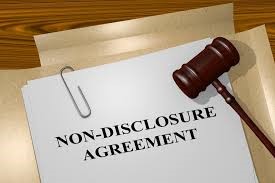A non-disclosure agreement (also referred to as an NDA) is a contract that is enforceable in terms of the law and creates a relationship between two or more parties. The relationship is characterized by confidentiality. A non-disclosure agreement may also be referred to as a confidentiality agreement amongst other names. The signatories agree that any sensitive information they may collect, discuss or share will not be divulged to any third parties.
This form of agreement can be applied to the protection of trade secrets. A trade secret is defined as information that is subject to reasonable attempts to maintain its secrecy, has value to others who cannot lawfully receive the knowledge and has either current or potential independent economic value[1]. As long as a business technique is kept private and secure, it can be protected as a trade secret. The trade secrets are protected through non-disclosure agreements that are signed between the employer and the employee amongst other parties. The employer can go further and place a covenant in restraint of trade to further protect their trade secret but that is a story for another day.
A non-disclosure agreement may be relied on by inventors that intend to exhibit their inventions to potential partners, distributors, agents or other parties so as to ensure that their invention is protected. Companies frequently use non-disclosure agreements when they get into negotiations with other companies or entities. Non-disclosure agreements afford the parties the freedom to exchange private (confidential) information without worrying that their rivals would obtain the information and exploit such to their advantage. The agreement can cater to both parties’ interests and in the event that this is the case, the agreement is referred to as a mutual non-disclosure agreement.
CONTENTS OF A NON-DISCLOSURE AGREEMENT
- Details of the parties such as the name of individual, company or entity, identity particulars such as ID number or registration number and or place of residence or business,
- The terms of the agreement. The agreement must highlight who is bound by the terms of confidentiality as outlined by the agreement (either one or all) together with the conduct expected of all parties concerned,
- The parties that are permitted access to the confidential information and third parties that are not permitted access to the information,
- The definition of “confidential information” in clear and concise terms together with a clause that defines what deems or constitutes confidential information,
- Term or duration of the agreement,
- Breach of the agreement (parties can have a clause that talks about what constitutes breach),
- Dispute resolution (where and how disputes may be resolved some may choose the courts while others opt for arbitration amongst other factors and
INFORMATION THAT CANNOT BE HELD TO BE CONFIDENTIAL
- Information that the other party/s(recipient) is already familiar with
- Information that is known to the public.
- Information disclosed to the other party/s (recipient) by a third party (that is not a party to the agreement and as such has no duty of confidentiality to the disclosing party).
Non-disclosure agreements encourage the doing of business as they provide companies, individuals and entities with the confidence to freely share information knowing that it shall be kept secret. For all your contracts please feel free to contact our team of attorneys that will assist you with such.
This is for general information purposes only.
[1] https://www.uspto.gov/ip-policy/trade-secret-policy


